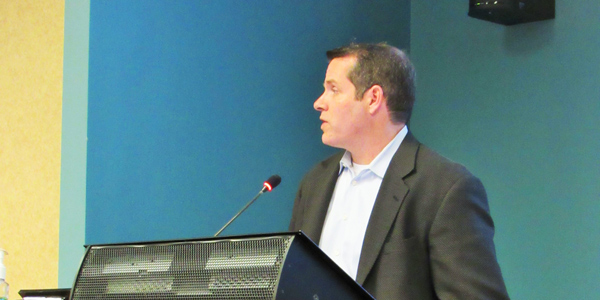MISO’s Resource Adequacy Subcommittee will make discussion of gas-electric coordination a priority throughout the first quarter of the year.

“Coordination is an important part of MISO’s ongoing strategy, but it has a lot of different time horizons as our reliance on gas grows,” said MISO adviser Scott Wright at a Jan. 11 subcommittee meeting.
The RTO’s foremost priority is ensuring grid reliability while “analyzing and vetting” resource adequacy risks under increased gas reliance, according to Wright.
“We’re very well positioned in MISO with a good gas pipeline system,” Wright said. “Our 15-state footprint has about 20 to 30 pipeline systems.”
MISO will this year pilot a program that sends hourly gas usage profiles to a handful of selected pipeline operators. RTO staff will update stakeholders on the project later in the quarter. (See MISO to Continue Gas-Electric Coordination Efforts in 2017.)
Wright repeated assurances that the RTO will not try to influence generator behavior with the use of hourly profiles and expanded contingency planning: “For us, it’s knowing what is going on. It’s a way to be proactive in real time so operators know what kind of headroom they have.”
Preliminary Load Forecast Released
Preliminary data from MISO’s independent load forecast for the 2017/18 planning year indicates the RTO expects coincident peak demand of 122 GW during the period and a 135-GW planning reserve margin requirement.
Other details from the preliminary forecast:
- Zone 1, covering Minnesota, North Dakota and western Wisconsin, shows a 16,307-MW coincident peak forecast and a 18,246-MW planning reserve margin requirement;
- Zone 2, covering eastern Wisconsin and upper Michigan, should register 12,184 MW in coincident peak demand and will require a 13,410-MW planning reserve margin;
- The collective coincident peak forecast for Iowa’s Zone 3, Missouri’s Zone 5 and Michigan’s Zone 7 comes in at 36,673 MW, with the planning reserve margin requirement expected to be 40,667 MW;
- Zone 4 in Illinois should peak at 8,975 MW and have a 9,920-MW planning reserve margin requirement; and
- Zone 6, covering Indiana and Kentucky, should register a 16,577-MW coincident peak and hold a 18,512-MW planning reserve margin.
MISO South — which includes Arkansas’s Zone 8, Zone 9 covering Louisiana and Texas and Mississippi’s Zone 10 — together have a 36,673-MW coincident peak forecast and a 34,081-MW planning reserve margin requirement.
Consumers Energy’s Jeff Beattie contended that data should not be combined for Michigan’s Zone 7, Iowa’s Zone 3 and Missouri’s Zone 5 because Consumers and DTE Energy are required to report their own load data to Michigan. He said the combined data is concealing trends that the company could otherwise identify and use.
“It’s putting us at a disadvantage,” Beattie said.
DTE’s Nick Griffin said he also supported more data transparency among zones.
RASC Chair Gary Mathis said the item would be taken up at the March meeting, when MISO plans to post more up-to-date values and host a discussion on the issue.
— Amanda Durish Cook



